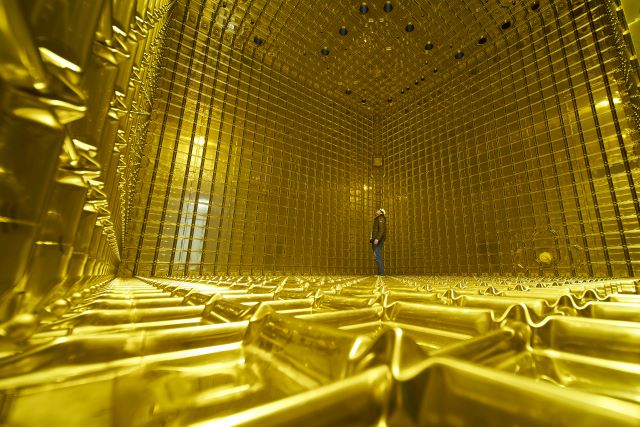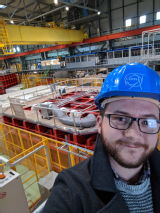James Pillow
Research Interests
The research for my PhD is in the area of experimental neutrino physics. Specifically, I am working on the protoDUNE Single-Phase detector, as part of the DUNE collaboration.
During the second half of 2018 I was located out at CERN, working on the ProtoDUNE Single-Phase (PDSP) detector. Currently PDSP is the world's largest Liquid Argon Time Projection Chamber ever constructed. During the second half of 2018 PDSP was able to record data on particles from one of CERN's auxiliary beam lines. This data is instrumental to the greater DUNE collaboration, as it provides vital measurements and understanding of the detector design, calibration, and data taking methods in preparation for the even larger detector in the mid 2020s.
For a fantastic seminar on PDSP, I recommend watching the seminar given by Flavio Cavanna at Fermilab last September: ProtoDUNE-SP: chronicles of an endeavor.
Research Summary
The main area of research for my PhD has been estimating the energy of electromagnetic showers in LArTPCs. But what does all that mean?
What is a ‘LArTPC’?
A Liquid Argon Time Projection Chamber is a big box, containing liquid Argon (kept at a chilly -186C), which we then fire a beam of particles into. As these particles pass through the liquid Argon, the electrons orbiting the nuclei are excited so much that they become freed from their parent nuclei. These freed electrons are then forced to drift to one side of the detector under the influence of a very large electric field. When the electrons reach the edge of the detector, they are collected by three planes of wires which we use to make a 3D reconstruction of the interacting particles

Inside the protoDUNE Single-Phase detector
What is an electromagnetic shower?
An electromagnetic shower is where an initial high energy particle interacts with an Argon nucleus, producing a secondary particle travelling through the liquid Argon. Both particles then go on to interact further, creating more secondary particles, and so on and so forth until you have a large cascade of particles travelling through the liquid Argon. During each interaction, to ensure energy is conserved, each particle will lose momentum, and so eventually the cascading particles will come to a rest.

An image of an electromagnetic shower in a LArTPC
Why do we want to estimate their energy?
Knowing the energy of these showers is very important in understanding the way in which neutrinos are interacting with matter, and subsequently helps us understand the intrinsic properties of neutrinos. Knowing more about these intrinsic properties will allow us to answer some of the big questions in particle physics. One notable question is “Why is there more matter than anti-matter?” – essentially a question asking why we exist!
Further Reading
For some fantastic further reading, and some amazing pictures, see the two following Symmetry articles!
- The Biggest Little Detectors - https://www.symmetrymagazine.org/article/the-biggest-little-detectors
- ProtoDUNE in Pictures - https://www.symmetrymagazine.org/article/protodune-in-pictures
Other Work
My work has also included:
- Investigating the removal of cosmic ray muons from the protoDUNE detector.
- Assessing the ability of augmenting traditional particle identification techniques using deep learning.
- Helping to display and develop metrics for use in the online monitory software of protoDUNE.

Contact Details:
Office: P450
Telephone:
+44 (0)24761 50208
E-Mail:
j.pillow@warwick.ac.uk
